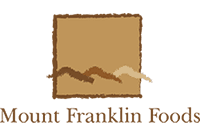This article is also available as a 1-page pdf document.
For Mount Franklin Foods, a candy and snack manufacturer headquartered in El Paso, Texas, the years leading up to 2011 were tumultuous. A revolving leadership door had ushered four CEOs in and out in two years. When CEO Gary Ricco joined the company in May of 2011, the company had struggled for years to turn a profit. By the end of 2011, the company had gained some ground, but it was clear a change in management style and better decisions at the top would not be enough to realize the improvements that were needed to turn the company around.
In December 2011, Ricco enlisted Heather Stagl, change management facilitator and founder of Enclaria LLC, to help the management team transform the company. Dubbed the Transformation Team, the group of 35 managers would be responsible for developing and executing the strategy of the organization. This is the story of how they did it.
Alignment
Mount Franklin Foods is the parent company of two subsidiaries: Azar Nut Company and Sunrise Confections. The first Transformation Team workshop was the first time the whole group had been in one room together, so understandably they were not on the same page. But the team knew things needed to change if the company was going to not only survive, but thrive. The first step was to assess reality by discussing what did and didn’t work. Through a series of exercises, they collectively admitted they needed to leave behind low margins, inconsistent quality, finger pointing, and ineffective communication. Together they decided on the key transition areas that would move the company towards profitable growth.
Accountability
Having agreed on what should be fixed and on a vision for the future, the team’s next workshop a few months later got more specific about how they would achieve it. Using the Balanced Scorecard methodology, the team developed a one-page strategy map, which detailed the objectives the team was trying to achieve and showed how they were connected. They also created a scorecard to measure their performance against each objective. By the end of the workshop, each objective had an owner assigned who was responsible for making the needle move in the right direction.
Collaboration
When the Transformation Team met to report on their progress in June 2012, things had started to improve. However, objective owners working independently had not gained as much traction as expected. So, in August the Transformation Team divided into Theme Teams that were responsible for achieving all the objectives in each strategic theme: new products, sales, quality, supply chain execution, and organization. Each Theme Team kicked off with a full-day workshop using the Influence Change at Work Toolkit, developed by Stagl to clarify the transitions to implement and to show how to effectively lead change. Not only did the Theme Teams provide much-needed focus and momentum, they also provided an opportunity for more people to become involved in the transformation.
Determination
At the beginning of the transformation process, participants on the team expressed concern that the effort would be the next in a list of failed initiatives to turn around the company. To prove they were in it for the long haul, the CEO employed a few tactics. First, he started each biweekly executive team meeting with a review of the strategy and reports of their progress against it. He also showed his commitment by bringing the whole Transformation Team together three times per year for a full-day workshop facilitated by Stagl. And he and the Theme Team leaders worked individually with Stagl as their coach to help remove obstacles, increase influence, and stay on track. Members of the Transformation Team no longer doubted management’s resolve to follow through with the transformation process.
Results
After years of losses, the profitability goal the team set for 2012 initially seemed like a giant challenge. By year-end, they had doubled it. Now in the middle of 2013, they are on track to beat this year’s goal to surpass 2012’s profits by 25%. But the growth is just the end result of the great work the Transformation Team has done. Together they documented many new processes to help work go more smoothly. They instituted a systematic approach to improve quality, from both process and culture perspectives. Survey scores on communication and accountability have increased. They uncovered and implemented many improvement opportunities. They introduced many new value-added and innovative new products. And perhaps most importantly, the team learned how to work together on multiple initiatives to support a common goal.
Would you like to orchestrate a similar success story for your organization? Contact me to learn how we can work together to influence change.

